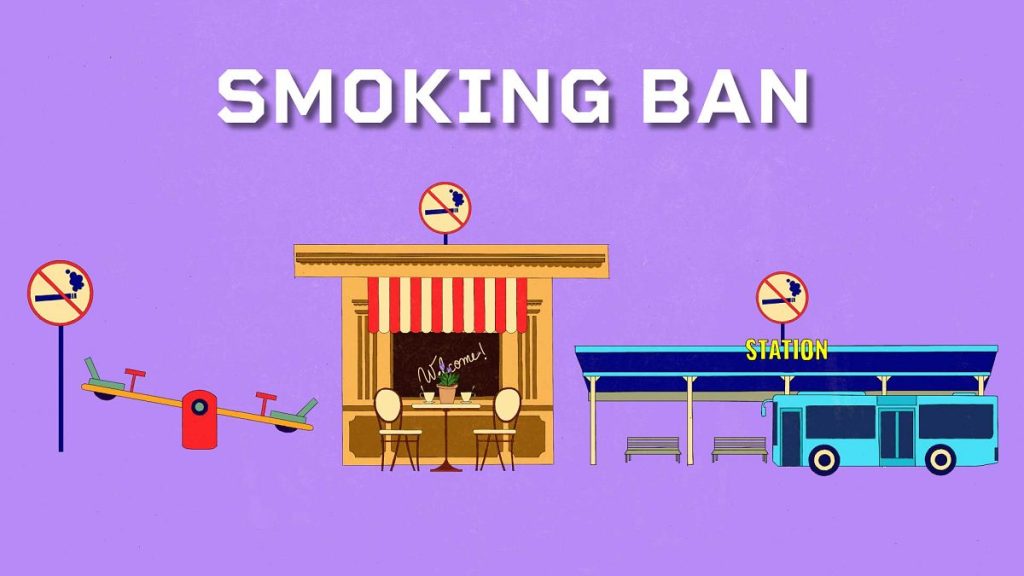The European Union has embarked on a mission to curtail secondhand smoke exposure in public spaces, aiming to protect citizens from the detrimental health effects of tobacco. This initiative, adopted by EU Member States as a recommendation, targets a range of outdoor locations frequented by the public, including playgrounds, amusement parks, restaurant terraces, public transport stops, and areas near healthcare and educational institutions. The scope of the ban extends beyond traditional cigarettes to encompass newer nicotine delivery systems like electronic cigarettes, heated tobacco products, and herbal vaporizers. While the overarching goal is to foster a healthier environment for all, the path to implementation varies, with each of the 27 Member States retaining autonomy in how they enforce these measures within the next five years. This flexibility acknowledges the differing regulatory landscapes and public opinions across the bloc.
The recommendation, though not legally binding, has sparked considerable debate, reflecting the complexity of balancing public health with individual liberties and economic considerations. Some Member States, like Czechia, have called for further research into the effects of newer tobacco products before implementing sweeping restrictions. Others, such as Sweden and Lithuania, have already taken proactive steps to limit smoking in certain public spaces, demonstrating a range of approaches to the issue. This diversity underscores the challenge of harmonizing tobacco control policies across a diverse European landscape. The varying perspectives are further reflected in public opinion, with some individuals supporting the ban in areas frequented by children, while others question its necessity in spaces like open-air restaurant terraces.
The initiative to reduce secondhand smoke exposure forms part of a broader EU strategy to combat cancer, a significant public health concern across the continent. The ambitious “tobacco-free generation” goal, aiming to reduce smoking prevalence to just 5% by 2040, highlights the long-term vision of this comprehensive plan. Achieving this target will require sustained efforts on multiple fronts, including public awareness campaigns, stricter regulations on tobacco products, and support for smoking cessation programs. The current recommendation serves as a crucial step towards realizing this vision by addressing the pervasive issue of secondhand smoke.
The debate surrounding the inclusion of newer nicotine products within the scope of the ban has been particularly contentious. While proponents of the ban argue that these products pose similar health risks to traditional cigarettes, some, particularly within the center-right European People’s Party (EPP), advocate for their exclusion. They argue that e-cigarettes, for instance, can serve as a tool for smoking cessation, citing recent research suggesting their potential in helping smokers quit. This perspective clashes with the World Health Organization’s stance, which emphasizes the harmful effects of nicotine and other toxic substances found in e-cigarettes. This scientific disagreement adds another layer of complexity to the debate, highlighting the need for continued research and evidence-based policymaking.
The EU’s commitment to reducing tobacco use is further reinforced by financial support provided to Member States. Grants of up to €16 million are available to aid in the adoption of anti-smoking policies, while an additional €80 million is earmarked for nicotine control and addiction prevention. This funding underscores the EU’s recognition of the significant public health and economic burden of tobacco-related illnesses. It also demonstrates a proactive approach to empowering Member States with the resources necessary to implement effective tobacco control strategies.
Looking ahead, the European Commission is poised to propose new regulations on tobacco taxation, advertising, and new products in 2025. These anticipated measures are likely to generate further debate, as they will undoubtedly impact both smokers and the tobacco industry. The focus on taxation and advertising reflects a broader strategy to discourage tobacco consumption by making it less accessible and less appealing, particularly to younger generations. The ongoing evolution of tobacco control policies within the EU reflects a dynamic interplay between scientific evidence, public opinion, economic considerations, and individual liberties, promising a continued discussion on the best path forward.

